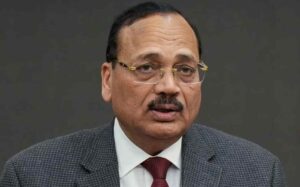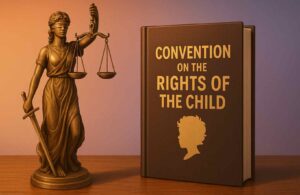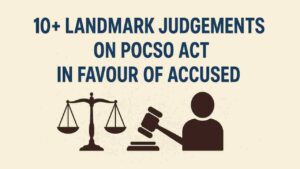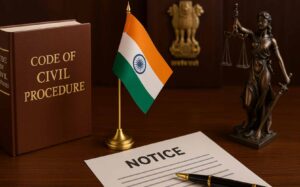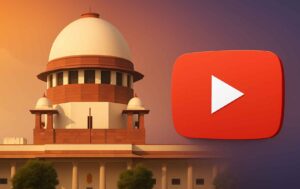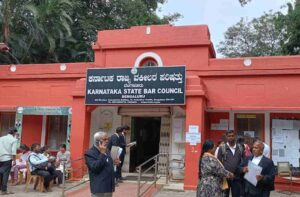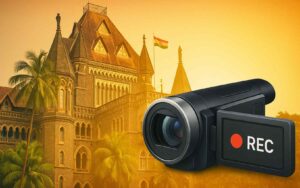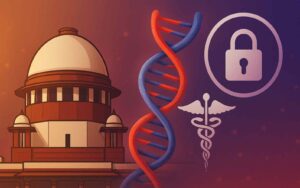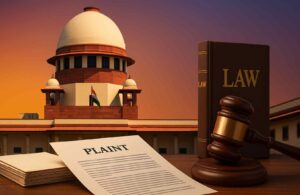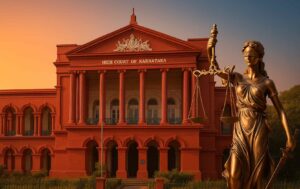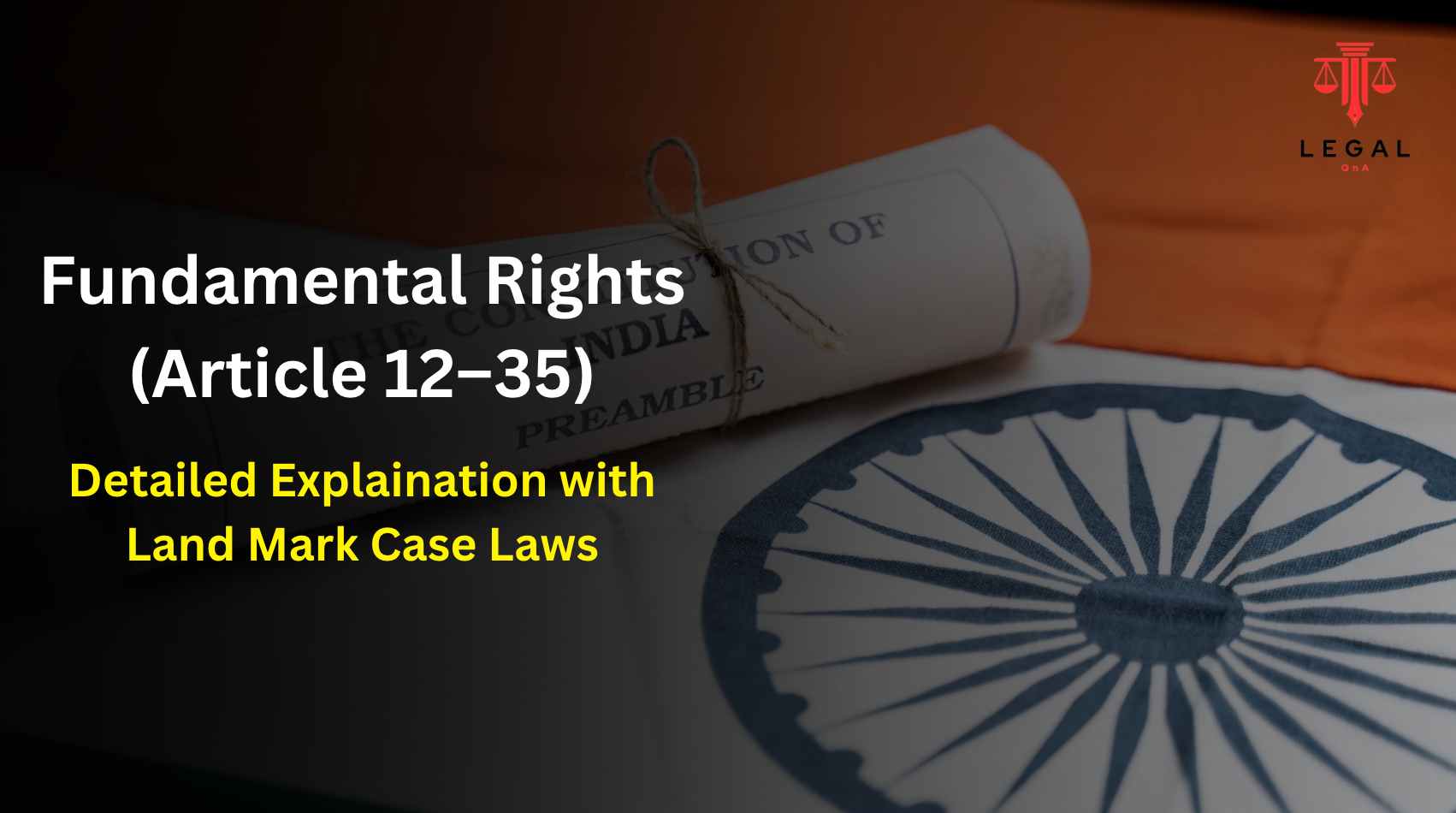Fundamental Rights (Articles 12–35) protect individual freedom, equality, and justice in India. They ensure constitutional safeguards against discrimination, uphold dignity, and empower citizens. Key cases like Kesavananda Bharati and Maneka Gandhi highlight their evolving interpretation, strengthening democracy and human rights.
Fundamental Rights form the bedrock of any democratic society. They are not only the guarantee of individual liberty and dignity but also serve as a shield against arbitrary state action.
In India, these rights are enshrined in Part III of the Constitution and have evolved over decades through constitutional debates and landmark judicial pronouncements. As Justice K.S. Puttaswamy (Retd.) once remarked,
“Privacy, dignity, and freedom are not privileges granted by the State; they are the birthright of every human being.”
Such words encapsulate the spirit of fundamental rights—rights that are inherent, inalienable, and essential for the overall development of an individual.
In this article, we will explore the origins, evolution, classifications, and practical enforcement of fundamental rights. It discusses landmark cases that have shaped their interpretation and illustrate how these rights continue to impact society today.
Historical Evolution and Philosophical Underpinnings
Origins in Natural Law and the Enlightenment
The idea of inherent human rights has deep historical roots. Philosophers like John Locke, Jean-Jacques Rousseau, and Voltaire argued that every person is born with natural rights—rights to life, liberty, and property that cannot be rightfully taken away by governments.
These ideas paved the way for revolutionary documents such as the Magna Carta (1215), the English Bill of Rights (1689), and later the American Bill of Rights (1791).
The notion that rights are “fundamental” and must be protected from tyranny is a legacy of the Enlightenment.
In India, the struggle for independence from colonial rule exposed the injustices and deprivations inflicted on millions.
Indian leaders, including Dr. B.R. Ambedkar—the chief architect of the Indian Constitution—were deeply influenced by global human rights discourse.
They envisioned a Constitution that would not only liberate India from British subjugation but also enshrine inalienable rights for every citizen.
The Constituent Assembly and the Birth of Fundamental Rights
The Constituent Assembly, which drafted the Indian Constitution between 1946 and 1949, was charged with creating a document that would reflect the aspirations of a newly independent nation.
The framers debated vigorously over the need for rights that would act as a counterbalance to state power. Fundamental Rights were included in Part III of the Constitution to ensure that every individual could lead a life of dignity, freedom, and equality.
During the debates, many members stressed that these rights were not mere privileges granted by the government but essential freedoms that belonged to the people by virtue of their humanity.
Dr. Ambedkar emphasized that the Constitution was “a covenant with the people” and that safeguarding individual rights was paramount for the sustenance of democracy.
Global Influence and Comparative Perspectives
The framers of the Indian Constitution did not work in isolation. They studied various constitutional models from around the world.
For instance, the United States’ Bill of Rights provided a model for judicial protection, while the French “Declaration of the Rights of Man and of the Citizen” emphasized liberty, equality, and fraternity.
International instruments such as the Universal Declaration of Human Rights (UDHR, 1948) further reinforced the notion that every human being is entitled to certain basic rights.
Thus, the Fundamental Rights in India are both a product of indigenous struggles for social justice and the culmination of global aspirations for freedom and dignity.
Structure and Classification of Fundamental Rights

The Indian Constitution categorizes Fundamental Rights into six main groups. These rights aim to secure civil liberties, ensure equality, and protect the dignity of individuals.
#1 Right to Equality (Articles 14–18)
Article 14 – Equality Before the Law and Equal Protection
Article 14 is the cornerstone of the Indian legal system. It mandates that every person, regardless of their background, is equal before the law and is entitled to equal protection of the laws within the territory of India.
It says, “The State shall not deny to any person equality before the law or the equal protection of the laws within the territory of India.”
In essence, it prohibits any arbitrary discrimination by the State.
Illustration: Imagine two individuals—one from a well-off background and another from a marginalized community—facing the same legal issue. Under Article 14, both should receive equal treatment by the judiciary, ensuring that economic or social status does not affect the outcome of legal proceedings.
Landmark Case: State of West Bengal v. Anwar Ali Sarkar (1952)
In this case, the court scrutinized state actions that appeared to confer arbitrary benefits on one group over another, reiterating that the right to equality is not absolute but subject to “reasonable classification.”
Article 15 – Prohibition of Discrimination
Article 15 specifically prohibits discrimination on grounds of religion, race, caste, sex, or place of birth. It ensures that the State does not discriminate against any individual or group.
It says, “Prohibition of discrimination on the grounds of religion, race, caste, sex, or place of birth”
Illustration: Consider a scenario in which a government institution refuses to admit students based solely on their caste. Such a practice would violate Article 15, as it undermines the principle of equal opportunity.
Article 16 – Equality of Opportunity in Public Employment
This article ensures that all citizens have equal opportunity in matters of public employment and prohibits discrimination in hiring for government positions.
It also permits the State to make special provisions for socially and educationally backward classes.
Article 17 – Abolition of Untouchability
Article 17 eradicates the practice of untouchability—a system of social exclusion prevalent in India. The practice is declared unconstitutional and is punishable by law.
This provision played a key role in uplifting historically oppressed communities.
Article 18 – Abolition of Titles
Article 18 restricts the conferral of titles by the State (with the exception of military or academic distinctions) and prohibits citizens from accepting titles from foreign states. This ensures that no individual is given an undue or hereditary privilege that could foster social hierarchy.
#2 Right to Freedom (Articles 19–22)
Article 19 – Protection of Certain Rights Regarding Freedom
Article 19 guarantees six freedoms to Indian citizens:
- Freedom of Speech and Expression: The right to express one’s opinions without fear of censorship or reprisal.
- Freedom of Assembly: The right to gather peacefully without arms.
- Freedom of Association: The right to form associations or unions.
- Freedom of Movement: The right to move freely throughout the country.
- Freedom of Residence: The right to reside and settle in any part of the territory.
- Freedom to Practice any Profession, Trade, or Business: Subject to reasonable restrictions.
“The right to speak, to assemble, and to move freely are the very pulse of democracy.”
Landmark Case: Maneka Gandhi v. Union of India (1978)
In this landmark judgment, the Supreme Court expanded the interpretation of Article 21 by reading Articles 14 and 19 into it.
The court held that the procedure “established by law” must be just, fair, and reasonable.
Article 20 – Protection Against Conviction for Offenses
Article 20 provides protection against retrospective criminal legislation, double jeopardy, and self-incrimination.
It ensures that no person is punished for an act that was not a crime when committed and that one cannot be tried twice for the same offense.
Article 21 – Protection of Life and Personal Liberty
Article 21 is among the most dynamic and expansive of the Fundamental Rights. It guarantees that no person shall be deprived of their life or personal liberty except according to the procedure established by law.
Over the years, the Supreme Court has interpreted “life” to include the right to live with human dignity, a clean environment, access to education, and other aspects essential for a meaningful life.
Article 21A – Right to Education
Inserted by the 86th Amendment, Article 21A makes education a fundamental right for every child aged 6 to 14 years, ensuring free and compulsory education.
This provision reflects the belief that education is indispensable for personal development and social progress.
Article 22 – Protection Against Arrest and Detention
Article 22 outlines the rights of individuals who are arrested or detained, including the right to be informed of the grounds of arrest, to consult a lawyer, and to be produced before a magistrate within 24 hours.
It also provides safeguards in cases of preventive detention.
#3 Right Against Exploitation (Articles 23–24)
Article 23 – Prohibition of Traffic in Human Beings and Forced Labour
This article prohibits trafficking in human beings and any form of forced labor, ensuring that individuals are not exploited either by private or public entities.
Article 24 – Prohibition of Employment of Children
Article 24 protects children by prohibiting their employment in factories, mines, and other hazardous conditions. This right is crucial for safeguarding the physical and mental development of children.
#4 Right to Freedom of Religion (Articles 25–28)
Article 25 – Freedom of Conscience and Free Profession, Practice, and Propagation of Religion
Article 25 guarantees freedom of religion, allowing every person to practice, propagate, and profess their religion. However, this freedom is subject to public order, morality, and health.
Article 26 – Freedom to Manage Religious Affairs
This article gives every religious denomination the right to manage its own affairs, establish institutions, and own property, while ensuring that state action does not interfere in religious matters.
Article 27 – Freedom from Payment of Taxes for the Promotion of any Particular Religion
Article 27 ensures that no person is compelled to pay taxes for the promotion of any specific religion, upholding the secular character of the State.
Article 28 – Freedom from Attendance at Religious Instruction or Worship in Educational Institutions
Article 28 provides that no educational institution wholly or partially funded by the State can compel its students to participate in religious instruction or worship.
#5 Cultural and Educational Rights (Articles 29–30)
Article 29 – Protection of Interests of Minorities
Article 29 safeguards the cultural, linguistic, and educational interests of minorities. It ensures that any section of the citizens having a distinct language, script, or culture has the right to conserve it.
Article 30 – Right of Minorities to Establish and Administer Educational Institutions
Article 30 gives minorities the right to establish and manage their own educational institutions, which is key to preserving their cultural heritage and ensuring that they receive education that respects their values.
#6 Right to Constitutional Remedies (Articles 32 and 226)
Article 32 – Right to Approach the Supreme Court
Article 32 is often described as the “heart and soul” of the Constitution by Dr. Ambedkar. It grants every individual the right to move the Supreme Court directly for the enforcement of their Fundamental Rights.
The Supreme Court may issue appropriate orders or writs, such as habeas corpus, mandamus, prohibition, certiorari, and quo warranto, to secure these rights.
“When the rights of the people are trampled upon, the Supreme Court stands as their last beacon of hope.”
This captures the significance of Article 32 as the ultimate safeguard for individual liberties.
Article 226 – Power of the High Courts
While Article 32 deals with the Supreme Court, Article 226 empowers the High Courts to issue writs for the enforcement of Fundamental Rights, making justice accessible at regional levels.

Landmark Judgments That Shaped Fundamental Rights Jurisprudence
The evolution of Fundamental Rights in India has been profoundly influenced by landmark judgments of the Supreme Court. Let us review some of the most significant cases:
A.K. Gopalan v. State of Madras (1950)
In one of the earliest fundamental rights cases, A.K. Gopalan challenged his detention under the Preventive Detention Act, arguing that it violated Articles 14, 19, and 21 of the Constitution.
The Supreme Court, in its 1950 judgment, adopted a narrow interpretation of “procedure established by law” under Article 21, emphasizing that it did not necessarily imply “due process” as understood in American jurisprudence.
Although this judgment later became subject to criticism, it laid the groundwork for subsequent debates on the scope of Fundamental Rights.
This case marked the beginning of a long judicial journey towards a more expansive understanding of individual liberties in India.
Shankari Prasad v. Union of India (1952)
This case revolved around the question of whether the power of Parliament to amend the Constitution under Article 368 was subject to the limitations imposed by Article 13.
The Supreme Court held that constitutional amendments were not “laws” within the meaning of Article 13(2) and hence could not be challenged on the grounds of violating Fundamental Rights.
This decision initially provided Parliament with sweeping amending power.
Illustration: Imagine a scenario where a law affecting your basic rights is passed by a democratically elected Parliament. In Shankari Prasad, the Court effectively stated that as long as the proper procedure is followed, even if fundamental rights are curtailed, the amendment stands.
Golaknath v. State of Punjab (1967)
A dramatic shift occurred in the Golaknath case, where an 11-judge bench of the Supreme Court ruled by a narrow majority (6:5) that Parliament could not abridge Fundamental Rights through constitutional amendments.
The Court argued that Fundamental Rights were inherent and could not be taken away even by the amending process. This decision shook the foundations of parliamentary supremacy and laid the seeds for the Basic Structure doctrine.
“The Constitution is not a mere instrument for the exercise of power; it is a safeguard of individual rights against arbitrary legislative encroachments.”
Kesavananda Bharati v. State of Kerala (1973)
Perhaps the most celebrated case in Indian constitutional law, Kesavananda Bharati reconciled the conflict between parliamentary power and the protection of Fundamental Rights.
In a historic 7-6 decision, the Supreme Court ruled that while Parliament could amend the Constitution, it could not alter its “basic structure.” This doctrine ensures that core principles—such as democracy, secularism, and judicial review—cannot be overridden by constitutional amendments.
This judgment has been called “the Magna Carta of India” because of its profound impact on safeguarding the Constitution’s basic structure.
Maneka Gandhi v. Union of India (1978)
Maneka Gandhi’s case is widely regarded as a turning point in the interpretation of Article 21. Gandhi’s passport was impounded under a law that did not provide a fair procedure.
The Supreme Court held that the procedure “established by law” must be fair, just, and reasonable, thereby expanding the interpretation of the right to life and personal liberty.
This case established that Articles 14, 19, and 21 are interconnected, and any deprivation of life or liberty must meet stringent standards.
Illustration: Consider a citizen facing arbitrary action by the government without a proper hearing. Maneka Gandhi’s case reminds us that procedural fairness is not negotiable when it comes to individual freedom.
Minerva Mills Ltd. v. Union of India (1980)
In Minerva Mills, the Supreme Court revisited the issue of parliamentary power over Fundamental Rights. The judgment struck down certain amendments that sought to curtail judicial review and undermine Fundamental Rights.
It reaffirmed the Basic Structure doctrine by declaring that any amendment that destroys the basic structure of the Constitution is unconstitutional.
This case marked the consolidation of the Court’s power to check parliamentary actions that violate core democratic principles.
Navtej Singh Johar v. Union of India (2018)
A more recent and socially transformative judgment, Navtej Singh Johar decriminalized consensual homosexual acts by partially striking down Section 377 of the Indian Penal Code.
The five-judge constitutional bench held that the criminalization of consensual sexual conduct between adults was a violation of the fundamental rights to equality, life, and personal liberty.
This judgment not only reaffirmed individual autonomy but also highlighted the evolving nature of Fundamental Rights in a modern, pluralistic society.
“The dignity of the individual transcends all prescribed social norms and prejudices; to deny a person the right to love freely is to deny them their very humanity.”
Right to Privacy Judgments
In the landmark case of Justice K.S. Puttaswamy (Retd.) v. Union of India (2017), the Supreme Court recognized privacy as a fundamental right implicit in Articles 14, 19, and 21.
The Court observed that privacy is essential for the development of individual autonomy and dignity, protecting the inner sanctum of one’s life. This decision has far-reaching implications, from data protection to personal autonomy in diverse spheres of life.
The Right to Privacy judgment has been hailed as a historic milestone that brought India in line with global standards of human rights protection.
Illustrations and Real-World Impact
Hypothetical Illustration: The Case of the Displaced Citizen
Imagine a citizen, Ravi, who is a small business owner in a rural district. Ravi’s business is severely affected when the local government arbitrarily revokes his license without providing any fair hearing or explanation.
Under the protection of Article 14 (Equality before law) and Article 21 (Right to life and personal liberty), Ravi can challenge this action in court.
By invoking the right to a fair procedure, Ravi’s case sets a precedent that government actions cannot be arbitrary or discriminatory.
This hypothetical situation underscores how Fundamental Rights are not abstract concepts but practical tools for ensuring justice and fairness.
Real-World Example: Education as a Fundamental Right
Consider the introduction of Article 21A—the Right to Education. For millions of children in India, education is not just a means to acquire knowledge but a lifeline that promises economic opportunity and social mobility.
Numerous studies have shown that increasing access to quality education has a direct correlation with improved living standards and reduced social inequality.
When children from marginalized communities are provided with free and compulsory education, the cycle of poverty can be broken, and communities empowered.
This example demonstrates the transformative power of Fundamental Rights in addressing deep-rooted social challenges.
Impact on Social Reforms
Fundamental Rights have been instrumental in shaping social reforms in India. For instance, the abolition of untouchability (Article 17) and the prohibition of discrimination (Articles 15 and 16) have catalyzed efforts to promote social justice.
Activists and social reformers have relied on these rights to secure land reforms, improve access to public employment, and protect the cultural heritage of minority communities.
The judicial activism seen in cases like Dalit rights litigation is a testament to how Fundamental Rights are used as a tool for progressive change.
The Interplay Between Fundamental Rights and Other Constitutional Provisions
Relationship with Directive Principles of State Policy
The Directive Principles of State Policy (Part IV of the Constitution) outline the goals and aspirations of the State in establishing a just society. Although these principles are not enforceable by the courts, they guide the formulation of policies and legislation.
Over time, the Supreme Court has recognized that Fundamental Rights and Directive Principles are complementary. While Fundamental Rights protect individual liberties, Directive Principles aim to achieve social justice and economic welfare.
For instance, while the right to equality ensures that no one is discriminated against, the Directive Principles encourage the State to take proactive measures to uplift disadvantaged groups.
Illustration:
A law that mandates land redistribution to ensure equitable wealth distribution may be justified under the Directive Principles, even if it affects certain property rights. The Kesavananda Bharati judgment balanced these competing interests by preserving the “basic structure” while allowing social reforms that benefit the majority.
Fundamental Duties and Their Role
Added by the 42nd Amendment in 1976, Fundamental Duties remind citizens of their responsibilities toward the nation. Although these duties are not enforceable by law, they serve as moral guidelines that encourage citizens to respect the rights of others and work toward national progress.
For example, the duty to preserve the environment is increasingly significant in light of challenges such as climate change. This interplay ensures that while citizens enjoy a range of Fundamental Rights, they are also mindful of their role in sustaining the fabric of society.
“Rights without duties are mere privileges; a balanced citizenry is one that both enjoys and upholds the pillars of democracy.”
Judicial Review as the Guardian of Fundamental Rights
One of the most powerful tools in the enforcement of Fundamental Rights is judicial review. The power of judicial review allows courts—particularly the Supreme Court—to scrutinize legislative and executive actions to
ensure they do not violate the Constitution. Articles 32 and 226 provide the mechanism for individuals to approach the courts for redressal. The evolution of judicial review has been critical in expanding the scope of Fundamental Rights.
For example, in Maneka Gandhi and Puttaswamy cases, the Court actively reinterpreted the provisions to include broader dimensions of personal liberty and privacy.
Judicial review has been described as “the very lifeline of the Constitution,” ensuring that the government remains accountable and that individual freedoms are protected from abuse.
Challenges, Criticisms, and the Future of Fundamental Rights
Balancing Individual Freedom and Social Order
Despite their lofty ideals, Fundamental Rights are not absolute. The Constitution allows for “reasonable restrictions” on many of these rights in the interests of national security, public order, decency, and morality.
This necessary balancing act has often been a source of contention. Critics argue that the State sometimes misuses these restrictions to curtail dissent or to favor particular groups over others.
Case in Point:
During periods of national emergency, rights under Article 19 (such as freedom of speech and assembly) may be suspended.
The infamous ADM Jabalpur v. Shivakant Shukla case (1976) during the Emergency period is often cited as an example where the judiciary’s acquiescence to executive power led to the erosion of civil liberties.
The dissenting opinion of Justice H.R. Khanna in that case remains a stark reminder of the perils of unchecked governmental power.
Quote by Justice Khanna:
“Detention without trial is an anathema to all those who cherish personal liberty… I appeal to the brooding spirit of the law for future correction.”
The Challenge of Modernity: Technology, Privacy, and Data Protection
In the digital age, traditional interpretations of Fundamental Rights are being tested by emerging challenges such as data privacy, cyber security, and the regulation of digital platforms.
The landmark Puttaswamy judgment in 2017 reaffirmed that the right to privacy is a Fundamental Right.
However, as governments and private corporations increasingly collect and process vast amounts of personal data, new legal questions arise regarding how these rights are to be protected in the digital era.
Illustration:
Consider a scenario where a social media company collects personal data without explicit consent. Under the evolving jurisprudence of the right to privacy, such an act may be subject to strict judicial scrutiny.
The challenge is to develop laws and regulatory frameworks that keep pace with technological advancements while ensuring that individual freedoms are not compromised.
Socio-Economic Rights Versus Civil Liberties
While Fundamental Rights primarily address civil and political liberties, there is an ongoing debate about the inclusion of socio-economic rights—such as the right to work, the right to food, and the right to shelter—as Fundamental Rights.
In India, these rights are largely found in the Directive Principles of State Policy, which are not enforceable by the courts. Critics argue that for a country with vast economic disparities, making socio-economic rights justiciable could help address poverty and inequality.
However, opponents of this view caution that expanding Fundamental Rights to include socio-economic claims might upset the balance between individual liberty and state intervention, potentially undermining economic efficiency and personal responsibility.
Strengthening the Judicial Safeguards
Looking to the future, the protection and evolution of Fundamental Rights depend largely on the continued independence of the judiciary.
Judicial activism has been pivotal in interpreting and expanding the scope of these rights. Yet, political pressures and challenges to judicial independence remain a constant concern.
For the Constitution to remain a living document, it must adapt to new challenges while preserving its core principles.
“A robust judiciary is not only the guardian of our Fundamental Rights—it is the cornerstone of our democratic ethos.”
This sentiment reminds us that the future of Fundamental Rights is inseparable from the integrity and independence of the judicial system.
How Fundamental Rights Impact Everyday Lives
#1 Education and the Right to Survival
In 2010, the Right to Education (Article 21A) was finally implemented, ensuring that every child between the ages of 6 and 14 receives free and compulsory education.
This right has had a profound impact on the lives of millions, particularly children from marginalized communities who might otherwise be trapped in cycles of poverty.
By ensuring access to quality education, the State is not only fulfilling a constitutional mandate but also empowering individuals to participate fully in the democratic process.
Real-World Example:
In several states, government-run schools have been instrumental in improving literacy rates and reducing gender disparities in education.
These success stories are a testament to the transformative potential of Fundamental Rights when implemented effectively.
#2 Protection Against Exploitation in the Workplace
Articles 23 and 24 protect citizens against human trafficking, forced labor, and the employment of children in hazardous conditions.
These rights have been invoked in numerous cases to prevent exploitation and improve labor standards.
For instance, various judgments have mandated stricter regulations on child labor and forced industries to adopt better working conditions for adult workers.
Illustration:
Consider a factory where workers are forced to work without adequate safety measures. Under the protection of these Fundamental Rights, affected workers can file lawsuits challenging these conditions.
Over the years, such litigation has led to significant improvements in labor laws and the enforcement of workplace safety standards.
#3 The Right to Privacy in the Digital Era
The recognition of privacy as a Fundamental Right has had far-reaching implications. In the wake of rapid digitalization, issues related to data security and individual privacy have become central to public debates.
The Puttaswamy judgment (2017) reaffirmed that privacy is an integral part of personal liberty and must be protected against arbitrary surveillance and data breaches.
According to recent studies, India is one of the fastest-growing digital economies in the world, with hundreds of millions of users online. The safeguarding of privacy rights is therefore not just a legal imperative—it is essential for the protection of individual dignity and autonomy in a modern society.
#4 Equality and Social Justice on the Streets
The abolition of untouchability and the prohibition of discrimination under Articles 15 and 17 have catalyzed social transformation in India.
Numerous court cases have addressed discriminatory practices in public spaces, employment, and education, paving the way for a more inclusive society.
Social activists have used these rights as a powerful tool to challenge systemic injustice and promote reforms in various sectors.
In urban areas, cases of caste-based discrimination in housing and employment have been successfully challenged in courts, reinforcing the message that the State must protect all citizens from exclusion and marginalization.
Fundamental Rights Across the Globe
While this article has focused primarily on India, it is instructive to consider how Fundamental Rights are understood in other democratic jurisdictions.
The United States
In the United States, the Bill of Rights enumerates a set of civil liberties that are similarly considered “fundamental.”
American jurisprudence, however, has a long tradition of “selective incorporation” through the Fourteenth Amendment, which extends federal rights to the states.
Rights such as freedom of speech, the right to privacy, and the right to due process are vigorously protected, often under a “strict scrutiny” standard.
“In America, rights are not just words on paper; they are the very soul of democracy, protected fiercely by the judiciary.”
Europe and the European Convention on Human Rights
European nations protect Fundamental Rights through instruments such as the European Convention on Human Rights (ECHR) and the Charter of Fundamental Rights of the European Union.
These documents guarantee rights that range from freedom of expression to protection from torture.
The European system, much like India’s, emphasizes the need for a balance between individual rights and societal interests.
Japan and Other Democracies
In Japan, the Constitution guarantees civil liberties such as freedom of expression and personal dignity, similar to those found in India.
However, each country’s historical context and cultural values shape the interpretation and application of these rights.
Despite differences in legal systems, the universal aspiration remains the same: to ensure that every individual enjoys a life of dignity and freedom.
Verdict
Fundamental Rights are much more than legal provisions—they are the very soul of a democratic society.
In India, these rights have been crafted through a remarkable synthesis of indigenous aspirations and global philosophies.
From the early debates in the Constituent Assembly to the transformative judgments of the Supreme Court, Fundamental Rights have continuously evolved to meet the challenges of changing times.
They provide the necessary safeguards against arbitrary action by the State, ensure that every individual is treated with dignity and respect, and empower citizens to live freely and equally.
Whether it is the right to a fair trial, the right to education, or the right to privacy in the digital age, these rights form the backbone of India’s democratic ethos.
“Cultivation of mind should be the ultimate aim of human existence.”
By understanding, defending, and constantly reimagining these rights, we not only preserve our past achievements but also build a future where every individual can thrive in dignity and freedom.
References and Further Reading
- A.K. Gopalan v. State of Madras (1950) – A foundational case that introduced the interpretation of “procedure established by law.”
- Shankari Prasad v. Union of India (1952) – Clarified the scope of Parliament’s power over constitutional amendments.
- Golaknath v. State of Punjab (1967) – A landmark judgment that questioned the amending power of Parliament.
- Kesavananda Bharati v. State of Kerala (1973) – Established the Basic Structure doctrine, safeguarding the core features of the Constitution.
- Maneka Gandhi v. Union of India (1978) – Expanded the interpretation of Article 21 to include fairness, justice, and reasonableness.
- Minerva Mills Ltd. v. Union of India (1980) – Reinforced the limitations on parliamentary power regarding Fundamental Rights.
- Navtej Singh Johar v. Union of India (2018) – A historic judgment decriminalizing homosexuality and reinforcing individual dignity.
- Justice K.S. Puttaswamy (Retd.) v. Union of India (2017) – Recognized the right to privacy as a Fundamental Right.
For those interested in exploring further, seminal works such as Granville Austin’s The Indian Constitution: Cornerstone of a Nation and Durga Das Basu’s texts on constitutional law provide extensive insight into the development and application of these rights.


